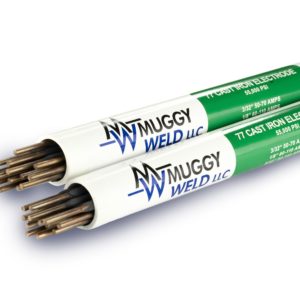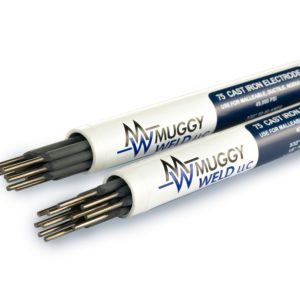Is Engine Block Welding Possible?
Engine block welding can be a challenging task, due to the temperamental nature of cast iron. Historically, mechanics would either replace the engine block or disassemble the engine to make the repair–both costly solutions. Thanks to Muggy Weld 77 cast iron welding rod, engine block welding has never been easier.
Case in point: This diesel Yanmar cast iron engine had a large hole in the block, caused by a thrown push rod. MuggyWeld customers Yohan and Mike Smith at PDX TIG Welding in Portland, Oregon decided to take on this difficult task. They employed a mild steel plate to weld to the cast iron engine block, and utilized 77 cast iron arc electrode, 2% lanthanated tungsten with 17 lbs argon.
After removing the coating from the 77 rod by dropping them in a bucket for a few minutes, PDX used tack welds to secure the steel plate in place. Tack welds are temporary welds spaced intermittently along the joint to be welded, for the purpose of holding the parts in alignment while the welding is completed.
Once the tack welds are in place, they begin applying 1/2 inch beads throughout the weld area– cooling the part for a minute or two between passes. Why? Large temperature swings are ill advised when welding cast iron, due to the brittle nature of cast iron and its tendency to re-crack.
While one side cools, a welder works the opposite side in a criss cross pattern.
Tip: Utilizing the “peening” technique is helpful when welding cast iron: tapping the freshly welded joint with a ball peen hammer to flatten the weld and seal the bond.
Mike recommended “get the cast iron red hot but do not allow it to puddle when welding.” He called it “TIG-brazing” the engine block.
When finished welding the engine block, always allow the part to slowly cool naturally to avoid recracking.
Note: Please observe all AWS Safety & Health Guidelines when using Muggy Weld products.

